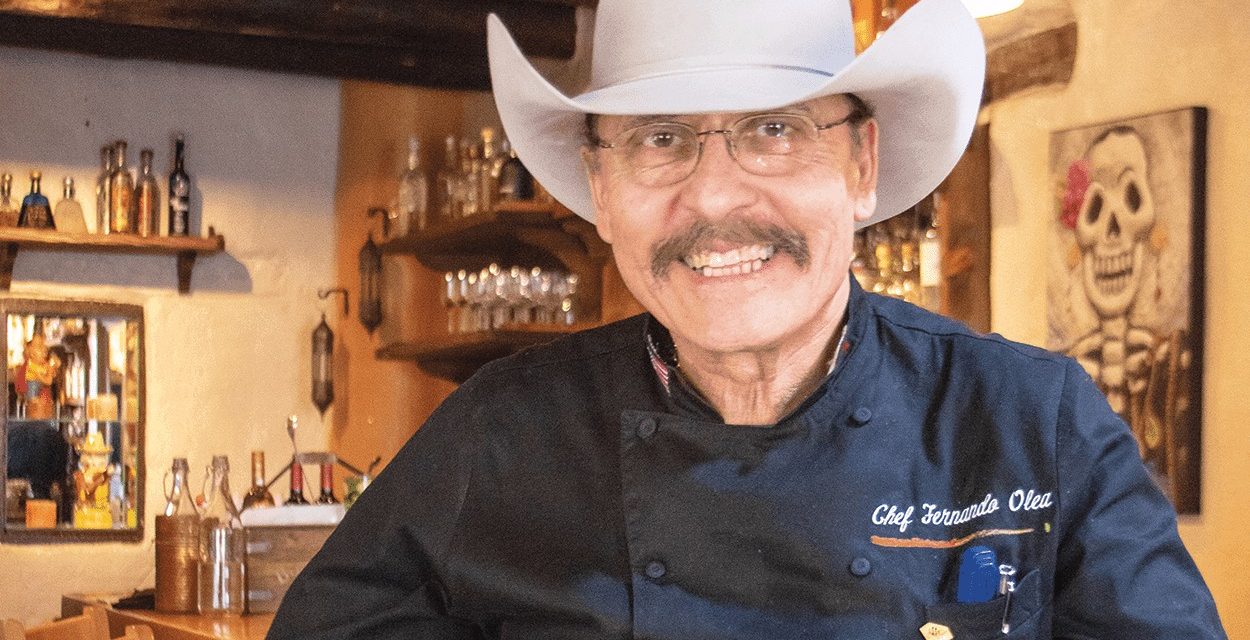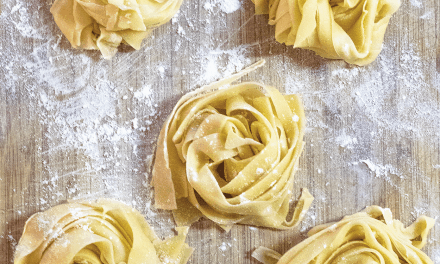Sazón Is A True Fine Dining Experience
By Candolin Cook · Photos by Stephanie Cameron

I wasn’t really in the mood for soup on a hot August evening at Sazón, but my server Diego Martinez kept pushing the chef’s signature dish, Sopa de Amor. “It is so special, not like anything you’ve had before,” he assured with the finesse of a true salesman. The menu offered no description and Diego had been intentionally vague, so when my starter arrived looking more like dessert I was intrigued. A heap of white amaretto foam sprinkled with cocoa powder and cinnamon sat atop a spring green base of poblano cream, concealing a lump of blue crab underneath. Diego instructed me not to stir the soup and to make sure I got every component in each spoonful. With my first bite, the interplay of diverse flavors, textures, and temperatures both delighted and confused my palate. Catching my perplexed expression, Diego walked over and asked expectantly if I liked it. “I think it might be the best soup I’ve ever had,” I replied sincerely.
Sazón is the culinary culmination of Chef Fernando Olea’s nearly thirty years in Santa Fe’s restaurant scene. Olea is a striking figure—tall, mustachioed, confident. On the afternoon we meet, he is wearing a banana yellow button-up shirt tucked into well-worn Levi’s, a tan cowboy hat, and a couple dozen bracelets and necklaces. I compliment his cowboy boots. “Crocodile skin,” he tells me, “but I’ve got all kinds—ostrich, snake, shark.” He exudes warmth and sincerity, and, according to Olea’s business partner at Sazón, Lawrence Becerra, is too humble. “I’d eat Fernando’s food in the back of a bus,” says Becerra, “but one of the most rewarding things about opening Sazón with Fernando is seeing him finally get the recognition he deserves.”
Born and raised in Mexico City, Olea immigrated to the United States in 1983. Though Olea’s first career was in business administration, eating what Americans called Mexican food inspired him to become a chef so that he could bring the “true” flavors of Mexico to the United States. “Tex-Mex cuisine has been sold to Americans as Mexican cuisine. Many people think Mexican food is beans, rice, yellow cheese, and iceberg lettuce, but that isn’t the Mexican food I know,” Olea says. “When Mexicans started making food for American palates, we lost the essence of something; so I started rescuing recipes from my family. My food is not made for the American palate. It’s the food I enjoy, and I hope they do too.”
Olea’s brand of Mexican cuisine draws inspiration from the best of Mexico’s fine dining and street food scenes as well as his aunt and mother’s most cherished recipes. At Sazón, these influences manifest in everything from Muscovy duck enmoladas to Oaxacan-style chapulines (grasshoppers) tacos. Olea’s moles are unarguably the stars of Sazón, but it wasn’t always that way. “Mole was hard at first because [most] Americans had only experienced [the sauce] at [subpar] Mexican restaurants, so they thought they didn’t like it,” says Olea. “How do you change somebody’s mind? The only way is to make them taste it.” Thus, every table receives a complimentary tasting flight of that evening’s moles—three savory, three sweet—and a handful of delicate tortillas to sample each. After deciding on a favorite, guests may pair it with one of that evening’s protein specials (on my visit: lamb, pork, halibut, duck, beef tenderloin)—or defer to the chef’s recommendation. Olea’s complex mole negro and spicy Coloradito rival the best I’ve had in Oaxaca, and his New Mexico mole made from white chocolate and local ingredients—apricots, Socorro pecans, piñon, red chile—is truly unique.

But mole wasn’t the only hard sell Olea experienced in bringing fine Mexican cuisine to Santa Fe. Though US diners have become more familiar with upscale Mexican food in recent years—thanks in part to international recognition for Mexican chefs such as Pujol’s Enrique Olvera—when Olea started out in the nineties, he had trouble getting people in the door. “I’d have hotel concierges tell me that when they recommended my [previous] restaurant, people would say, ‘Oh we don’t want Mexican food tonight, we want a nice dinner.’ I got to the point that I thought maybe I’m bringing the wrong food to the States because people didn’t even want to try it.” Despite such misperceptions, Olea garnered a loyal and enthusiastic following among Santa Fe foodies, including Lawrence Becerra and his wife Suzanna.
Becerra was born in New York City to European parents and has lived all over the world, including twenty-six years in London. He has dined in many of the globe’s top restaurants and is particular about what constitutes an exceptional dining experience. “When I decided to go into business with Fernando [in 2015] it was for selfish reasons. I was tired of restaurants with mediocre food, poor service, and bad wine. So I thought I’d make my own,” he says.
Both Becerra and Olea agreed that for Sazón to work, its food, drink, atmosphere, and service had to be superior and harmonious. In three years of business, the restaurant has achieved numerous awards and accolades for its cuisine; an exceptionally curated wine, mezcal, and tequila menu; and a romantic ambiance, bolstered by a fine art collection from Mexican artists. The last essential, good service, as many local restaurateurs will tell you, is the hardest to come by in New Mexico. “In Mexico City every fine dining establishment has impeccable service,” says Olea, “I don’t find that that’s [a given] in the United States. To be a server is a noble profession that takes a lot of dedication and time, but here waiting tables is largely seen as a job in transition.” Becerra adds, “It’s expensive to eat good food. You want everything to be perfect. This whole notion that the service can be laid back because this is a laid back town is bullshit. People come here from all over the world, and when they come to Sazón, we don’t just want them to have a meal, we want them to have an experience.” At Sazón servers receive rigorous training to provide that experience. “The cream has risen to the top and we are very pleased with our team now,” says Becerra. Adds Olea, “I want people who really love the industry they are in, it’s just that.”
I tell Olea that at the conclusion of my meal the other night, my excellent server Diego tempted me with another mysterious signature dish, the Dulce Sinfonía, but I’d had no room for dessert. Olea looks slightly hurt and more than a little sorry for me. “You will try it now,” he orders. Once again I am instructed to get every component in one bite—but Olea requests that I don’t describe the flavors here, so that readers may experience the dish “organically, without expectations.” Olea is delighted that I love the dessert and that I can’t guess its ingredients. “Sweet Symphony is magic. I think it was a gift to me,” he says, gesturing upward. That may be, but Olea’s cooking is a gift to Santa Fe.
Candolin Cook is a historian, writer, editor, and former co-editor of edible New Mexico. She recently received her doctorate in history from the University of New Mexico and is working on her first book.













